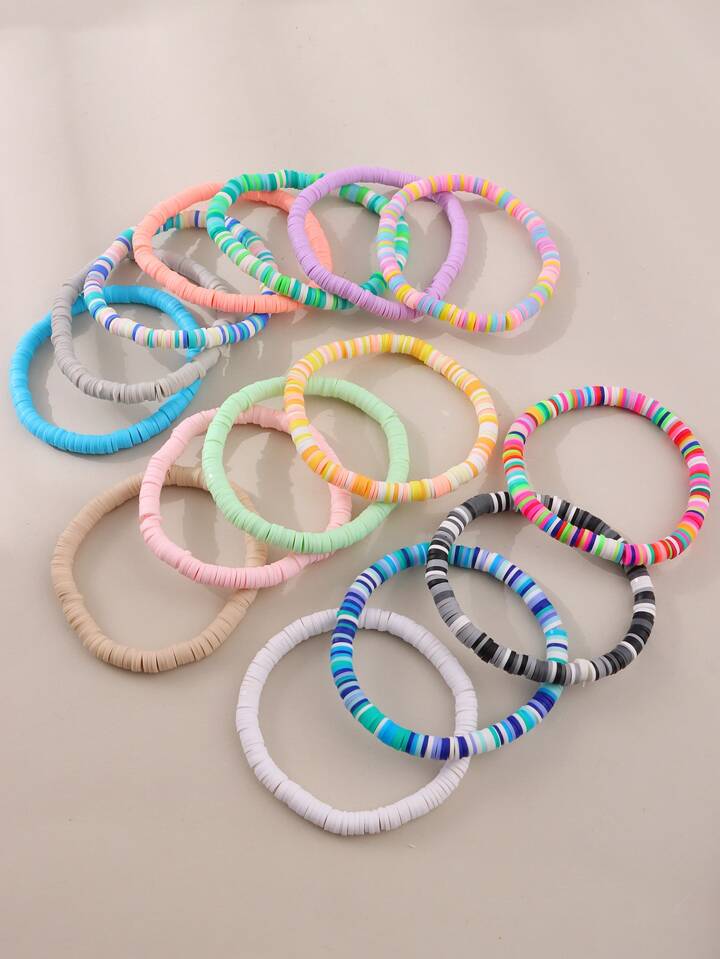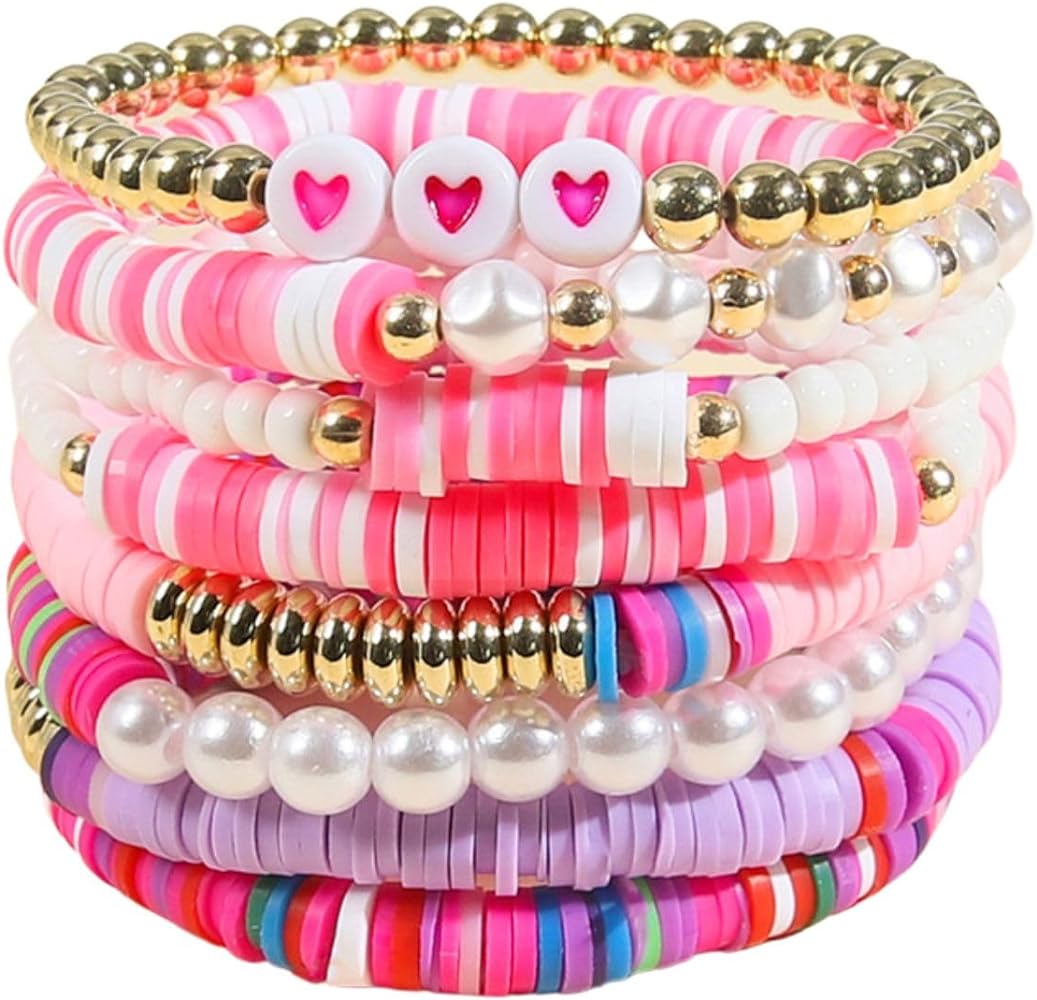Understanding the Basics of Clay Bracelet Making
A. Introduction to Clay Bracelet Craft
Creating clay bracelets allows for artistic expression and the satisfaction of making personalized jewelry.
B. Benefits and Varieties of Clay for Bracelet Making
Various types of clay, such as polymer clay, air-dry clay, and porcelain clay, offer different textures and finishing options for bracelet making.

Gathering Materials and Setting Up
A. Selecting the Right Type of Clay
Consider the desired finish and workability when choosing clay for your bracelet project.
B. Essential Tools and Workspace Preparation
Gather a rolling pin, craft knife, cookie cutters, and create a clean and well-ventilated workspace for a smooth crafting experience.
Creating the Base for the Bracelet
A. Rolling and Shaping the Clay
Roll the clay into an even sheet to the desired thickness for the bracelet.
B. Cutting and Sizing the Bracelet Base
Carefully measure and cut the clay to the desired length, ensuring a proper fit around the wrist.

Designing and Decorating Techniques
A. Adding Texture and Patterns to the Clay
Incorporate texture and patterns onto the clay using stamps, textured mats, or other tools for visual appeal.
B. Incorporating Colors and Personalization
Enhance the bracelet by blending different shades of clay or adding paints and imprints.
Baking and Curing the Bracelet
A. Proper Techniques for Baking Clay
Follow specific instructions for baking the type of clay you’ve chosen, ensuring optimal results.
B. Post-Baking Finishing and Curing Processes
Complete the curing process and consider applying gloss or matte finishes for durability.

Adding Findings and Clasps
A. Choosing and Attaching Metal Findings
Select suitable metal findings and carefully attach them to the bracelet for functionality and aesthetics.
B. Adding Final Touches and Clasps
Incorporate clasps and any final embellishments to complete the bracelet.
Customization and Personalization
A. Incorporating Personal Elements and Themes
Incorporate personal elements, such as charms or pendants, to make the bracelet meaningful.
B. Creative Ideas for Customizing Clay Bracelets
Experiment with various themes, be inspired by nature, or explore cultural and artistic influences.
Maintenance and Care
A. Tips for Caring for Clay Bracelets
Learn how to care for and clean your clay bracelets to maintain their appearance and quality.
B. Storage and Longevity Considerations
Store your clay bracelets properly to prevent damage and preserve their longevity.
Clay Bracelet Making
A. Introduction to Clay Bracelet Craft
Crafting clay bracelets is a highly rewarding creative endeavor that allows for unique and personalized jewelry designs. Transition: Furthermore, working with clay offers endless possibilities for creating original and meaningful pieces of jewelry.
B. Benefits and Varieties of Clay for Bracelet Making
Different types of clay, including polymer clay, air-dry clay, and porcelain clay, provide various textures and finishing options. Transition: Each type of clay offers distinct properties and may require specific handling and curing methods, allowing for versatile design possibilities.
Gathering Materials and Setting Up
A. Selecting the Right Type of Clay
When choosing clay for bracelet making, consider factors such as workability and the desired finish of the final piece. Transition: Understanding the characteristics of each type of clay can guide the selection process and contribute to the success of the bracelet-making project.
B. Essential Tools and Workspace Preparation
Gather essential tools such as a rolling pin, craft knife, cookie cutters, and prepare a well-ventilated and clean workspace. Transition: Having the necessary tools and creating an organized and comfortable environment will facilitate a smooth and enjoyable bracelet-making process.

Creating the Base for the Bracelet
A. Rolling and Shaping the Clay
Roll the clay into an even sheet with the desired thickness for the bracelet project. Transition: Ensuring the uniformity of the clay sheet is crucial for achieving a consistent and professional look of the bracelet.
B. Cutting and Sizing the Bracelet Base
Carefully measure and cut the clay to the desired length, ensuring a proper fit around the wrist. Transition: Precise cutting and sizing will contribute to the comfort and wearability of the finished bracelet.
Designing and Decorating Techniques
A. Adding Texture and Patterns to the Clay
Incorporate texture and patterns onto the clay using stamps, textured mats, or other tools for visual appeal. Transition: Adding texture and patterns enhances the aesthetic appeal of the bracelet, adding depth and detail to the design.
B. Incorporating Colors and Personalization
Enhance the bracelet by blending different shades of clay or adding paints and imprints. Transition: Adding color and personalization injects individuality and emotion into the creation, making each bracelet unique and meaningful.
Baking and Curing the Bracelet
A. Proper Techniques for Baking Clay
Follow specific instructions for baking the chosen type of clay, ensuring optimal results during the curing process. Transition: Baking the clay correctly is essential to ensure the strength and durability of the finished bracelet.
B. Post-Baking Finishing and Curing Processes
Complete the curing process and consider applying gloss or matte finishes for durability. Transition: Adding appropriate finishes and completing the curing process will improve the visual appeal and resilience of the bracelet.

Adding Findings and Clasps
A. Choosing and Attaching Metal Findings
Select suitable metal findings and carefully attach them to the bracelet for functionality and aesthetics. Transition: Adding appropriate findings is crucial for ensuring the bracelet’s integrity and enhancing its overall design.
B. Adding Final Touches and Clasps
Incorporate clasps and any final embellishments to complete the bracelet. Transition: Adding final touches and clasps adds a professional finishing touch, ensuring that the bracelet is secure and ready for wear.
Customization and Personalization
A. Incorporating Personal Elements and Themes
Include personal elements such as charms or pendants to make the bracelet more meaningful. Transition: Integrating personalized elements and themes adds sentimental value to the bracelet, transforming it into a cherished keepsake.
B. Creative Ideas for Customizing Clay Bracelets
Experiment with various themes, be inspired by nature, or explore cultural and artistic influences. Transition: Exploring creative ideas and themes opens up opportunities for designing unique and original clay bracelets that reflect individual tastes and interests.
Maintenance and Care
A. Tips for Caring for Clay Bracelets
Learn how to care for and clean your clay bracelets to maintain their appearance and quality. Transition: Proper care and maintenance will prolong the life and luster of the bracelet, ensuring it remains in top condition for years.
B. Storage and Longevity Considerations
Store your clay bracelets properly to prevent damage and preserve their longevity. Transition: Considering storage and longevity factors will protect the bracelet from wear and tear, preserving its beauty and integrity over time.